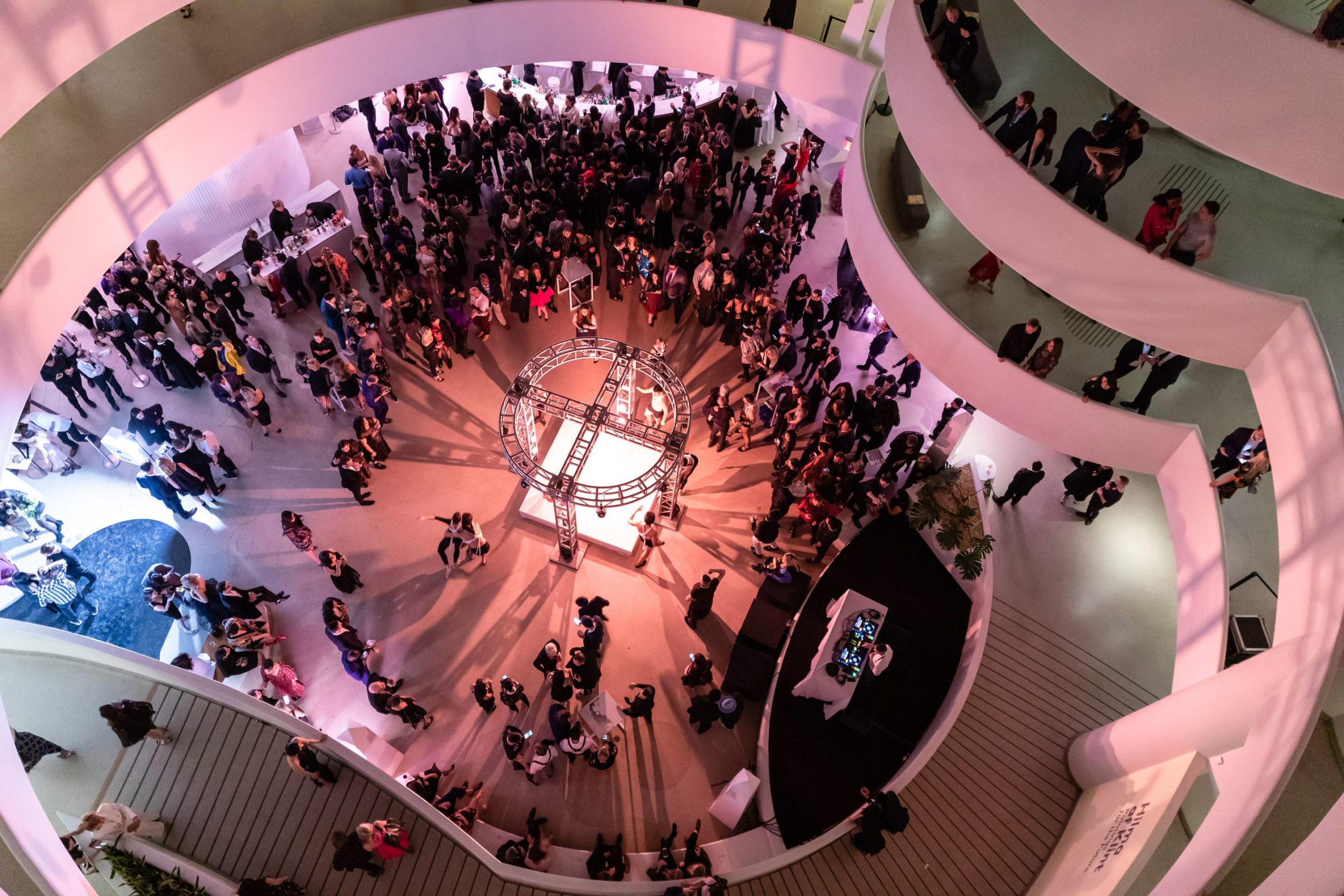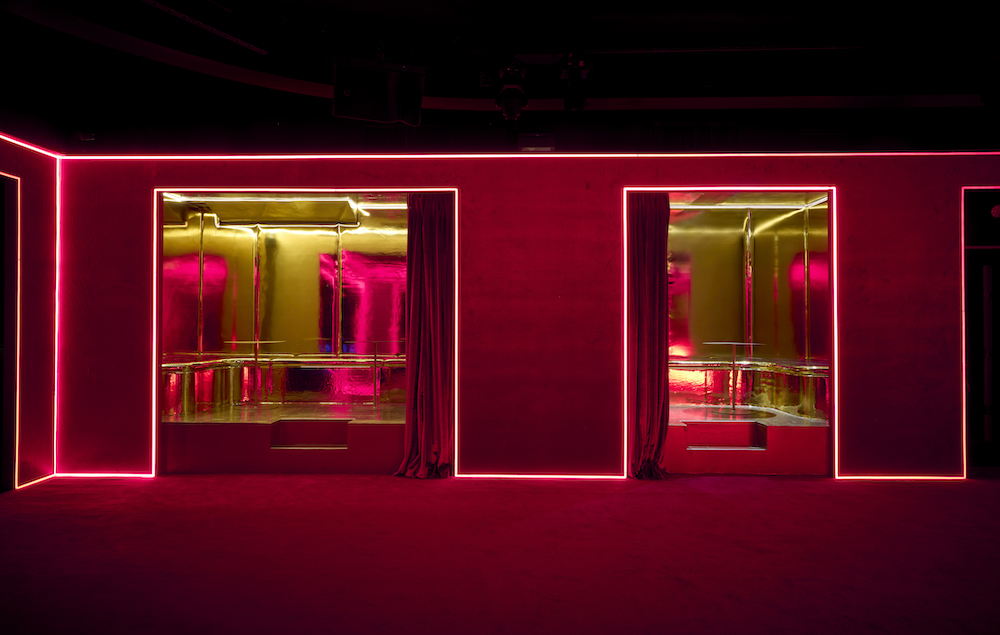Last month at The Solomon R. Guggenheim Museum, the Young Collectors Council (YCC) celebrated its annual fête with the YCC Party. The organization’s co-chairs—Noreen Ahmad, Alexandra Economou, Anne Huntington, Danny Mapes, and Tiffany Zabludowicz—welcomed special attendees to view the “Implicit Tensions: Mapplethorpe Now” exhibition, as well as an exciting night of cocktails, dancing, and special performances. In addition to music by Karsten Sollors, the night saw a site-specific dance performance entitled “Ballet Kink,” choreographed by Brendan Fernandes.
Based in Chicago, Fernandes is a seasoned professional dancer who’s known in the art world for his many collaborations with museums. His work has appeared in spaces like the Seattle Art Museum, the Block Museum, the Museum of Contemporary Art Chicago, and more. Whitewall spoke with the dancer and choreographer about his Guggenheim performance, his approaching show at The Noguchi Museum, and where he likes to enjoy art.
WHITEWALL: Congratulations on your recent performance at the Guggenheim for the YCC party. Can you tell us a bit about your routine?
BRENDAN FERNANDES: Thank you! I am still in bliss from it. The piece “Ballet Kink” is about mastery and form in ballet and the ways the techniques we use to form our bodies are fetishized. I am interested in the power dynamics within ballet and the ways we endure and labor masochistically in dance. For the YCC party I brought these questions into the forefront of the performance: ballet dancers were tied up in the rope art form Shibari, suspended or tied to each other. In being restrained I wanted my dancers to find new ways to move and new forms of freedoms. The restrain can be both a support and a burden but within this dynamic I am hoping to find new vocabularies for movement. This piece will be further expanded to become a solo show at the Asian Art Museum in San Francisco in the summer of 2020.
WW: You also are working on a performance for The Noguchi Museum. Tell us a bit about that.
BF: I am indeed. That show opens this coming fall. The works for the Noguchi exhibition begin with similar questions about mastery and form in ballet. This show will be the second chapter to “Master and Form,” a major installation commission by the Graham Foundation in Chicago. That installation will be part of the Whitney Biennial and a new body of work will be created for the Noguchi Museum. For this show I am thinking about the sets that Noguchi made for Martha Graham.
I used to train in Graham technique after my ballet life, so the specificity is fitting. I am making rocking chairs based on a prop that [Iasmu] Noguchi made for Martha Graham in her work “Appalachian Spring.” The rocking chair did not rock in its ordinal version, but my chairs will rock creating a challenge for the dancers, who will sit on them and try to remain motionless. To achieve this action they will have to use their core muscles constantly to balance and prevent movement. The labor and endurance will be hard. This will be the impetus and start of the dance but it will expand within the process to include new gestures generated and in response to this.
WW: Tell us a bit about where your journey with dance, and in the art world, began.
BF: I started dancing ballet, tap, and jazz as a teen and continued as I went to college. Art and dance were always things I did simultaneously but in my senior year of university I was injured and forced to stop. I was mentally and physically broken and did not train or take classes. It wasn’t until 2006 when I moved to NYC to participate in the Whitney Independent Study Program that I began to think about dance again. In that almost 10 years off, I focused on art making, thinking through my post-colonial identity. In NYC, I was immersed in legacies like Judson Church and began seeing dance again and this brought me back into it. I feel now I have found a perfect balance and synergy where dance and art intersect and complement each other in my work.
WW: When creating a routine, where does your creative process start?
BF: I always think through my ideas and concepts first and then take them to the studio to work with dancers to make movements. In the studio we experiment. We work collaboratively to think through ideas. I ask them to improvise and give them tasks to challenge the ways they move. This builds the movement vocabularies and ultimately becomes the dances.
WW: Dance is such a creative expression. Where do you find you source the most inspiration to translate through dance?
BF: I source inspiration throughout the course of Ballet history, from its origins as a form of etiquette for bowing in the court of Louie the 14th up to the work of present-day dancers. I am also continually thinking through questions of power, hegemony and everyday choreographies such as walking in urban spaces. I also source inspiration, imagery and movement from watching dance and dancing myself at the club.
WW: Who are some of your muses?
BF: I take inspiration from the dance legacies of Yvonne Rainer, Simone Forti, Trisha Brown and Merce Cunningham. All my dancers are my muses as they give and collaborate with me in such important ways. They not only inspire but physically make the dances.
WW: Tell us a bit about some of your daily rituals.
BF: Daily rituals are hard for me as I am always traveling but when I am home in Chicago structure happens and I like it. I normally make a smoothie in the morning, work on my computer, and read something in bed if I have the time. I like to work out and so that is part of my rituals. I feel that it keeps me focused and is somewhat of a break for me. I also go to my studio to think and make things. Sleep is very important to me and so I definitely make that part of my every day.
WW: Where do you go to see art?
BF: I see art all the time and traveling allows me that privilege. When I am in NYC, I go to Chelsea to visit commercial galleries or I visit the Whitney, MoMA, the Guggenheim, the Brooklyn Museum, the Studio Museum in Harlem, and The Noguchi Museum. When in Chicago, I go to the MCA Chicago, the Art Institute of Chicago, the Graham Foundation, and the DePaul Art Museum. I also love to go to my friends’ studios and see what they are up to!









